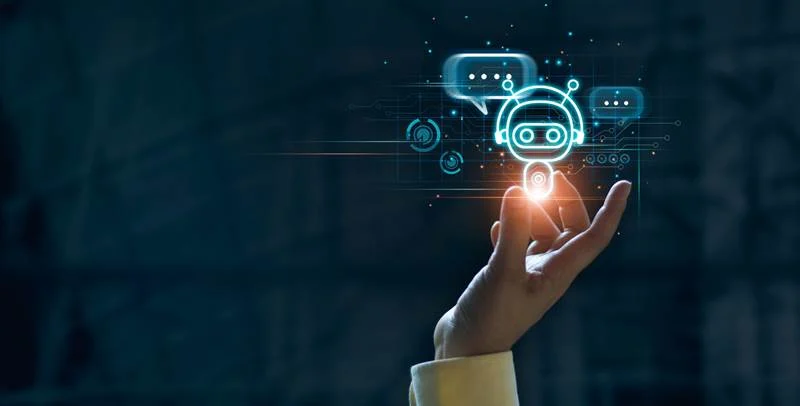Overview
ChatGPT 4 was launched on March 4 and has been the subject of intense discussion. One of the aspects of the discussion has been how it is different from its predecessor ChatGPT 3. The jury is still out because ChatGPT 4 is still not fully available publicly and it’s a paid version unlike its predecessor, which prevents widespread adoption. But enough information is out in the public domain to make a preliminary comparison between the two versions. In the software technology industry, a transition from 3 to 4 constitutes a major upgrade, and that has indeed been the case with the newest version of ChatGPT 4. Of course, it didn’t come with all the upgrades the experts have been expecting but still, it packs a punch. It’s superior to its predecessor in multiple ways such as the information processing capacity, understanding of the context of the prompts, and the processing of both text and images. This article compares the two versions under the following sections.
Superior response to the prompts
ChatGPT 4 has taken its creativity up by a few notches when responding to your prompts. ChatGPT 3 was good at understanding the context depending on how you set the prompt, but ChatGPT 4 can understand the context better, read between the lines, and understand the nuances. ChatGPT 4 is better suited to respond to prompts that require more complex and deeper understanding.
Domain-wise expertise
Compared to its predecessor, ChatGPT 4 has acquired significant expertise in domains like calculus and law and can solve complex problems more accurately and quickly than a human being. The OpenAI engineers tested both versions’ ability to crack the AP Calculus BC exam and here’s the result – ChatGPT 4 scored the same as the top 10% of the candidates while ChatGPT 3 scored the same as the bottom 10% of the candidates (Also Read: Who Are The Competitors of ChatGPT).
Learning languages
ChatGPT 4 is fast on its way to becoming a polyglot. Its proficiency with the English language is 85% compared to 70.1% of its predecessor and it can respond in 25 languages that include Mandarin, Polish, and Swahili.
Processes both images and text
This is one of the biggest differences with ChatGPT 3 which could understand or process only text inputs. ChatGPT 4 can, in addition to text, understand and interpret images. During the live stream of the announcement of the ChatGPT 4, an engineer demoed the use of images. The engineer provided the images of a Discord server and asked ChatGPT 4 to interpret and respond. ChatGPT could identify all the components and the live users of the server correctly. Now, this feature has multiple use cases. For example, you could have ChatGPT 4 review the layout of your website from the perspective of its target audience and have critical feedback on its user experience, usability, navigation, text, colors, and other aspects. Not only that, you could feed the personas of different reviewers and have their feedback quickly.
Safer responses
ChatGPT 4 produces safer responses compared to its predecessor. Safer in this context means non-discriminatory, non-racial, consistent, and compliant with general ethical standards of conversations. It’s the way ChatGPT 4 was set up. While in the case of ChatGPT 3, the responses evolved as it learned from new data it consumed every day, ChatGPT 4 is already configured with good standards from the beginning. Unsafe responses could lead to various troubles and ChatGPT 4 is on its way to minimizing those. According to an OpenAI technical report, ChatGPT 3 would produce 6.48% of toxic replies but ChatGPT 4 produces only 0.93% of toxic replies (Also Read: Can AI Have Biases?).
Accuracy of responses
Generative AI is supposed to make your life or job easier. For example, if you are writing blog posts, generative AI tools like ChatGPT3 can generate content ideas, outline, and facts. However, ChatGPT 3 has been providing a lot of inaccurate responses which could lead to problems. In AI parlance, this problem is known as AI hallucination. While ChatGPT 4 has not totally overcome the problem, the problem has been overcome to the extent of 19% to 29% lesser. And we’ve reasons to believe that it will evolve fast.
Capacity to process information
This is one of the biggest differences between the two versions. ChatGPT 4 has significantly increased its capacity to process information compared to its predecessor. While ChatGPT3 could process 4,096 tokens or around 8,000 words, ChatGPT4 can process up to 32,768 tokens or around 64,000 words which is a drastic change. In the favor of ChatGPT 3, it can be said that it’s a free version which ChatGPT 4 isn’t. But still, ChatGPT 4 offers a massive advantage with this feature and it’s especially applicable in multiple use cases such as creating large code snippets, reviewing large documents, and generating large documents based on prompts.
Remembering the context
It’s normal for both ChatGPT 3 and ChatGPT 4 to provide responses that are less than satisfactory. In that case, you follow up with updated prompts but expect it to remember the context of the conversation. ChatGPT 4 can retain the context of conversations for a longer duration than its predecessor. ChatGPT 3 has been observed to go off the context after a little while which necessitates a fresh conversation.
Conclusion
With the ChatGPT 4 still not fully available to the public, a full comparison and a conclusion are difficult, but ChatGPT 4 is well on its way to becoming a much-improved version of its predecessor. It’s an exciting proposition to even think that the OpenAI minds are still hard at work to chisel the version before they feel comfortable releasing it fully. ChatGPT 4 is more creative, intuitive, intelligent, and resilient and it has the potential to redefine how work is done. An interesting conversation could be around the future of ChatGPT 3, given the advances ChatGPT 4 has made. Will OpenAI invest any effort in improving it or its fate will be the same as the free, but less-powerful versions of many AI tools that are available in the market?



